Yes, you read that right. You can sell your online course without creating it first.
After you’ve made sure people actually PAY for it (not SAY they want to pay), then you build it.
This way, you don’t waste time, energy, and money creating a course no one wants.
Because let’s be real — people SAYING they want to pay ≠ actually PAYING.
Real people who’ve sold their online course before building
Sean Anthony — $2.8+ million in 3 years
From selling online courses, masterminds, and personal coaching, Sean always sells before he builds anything. Smart man.
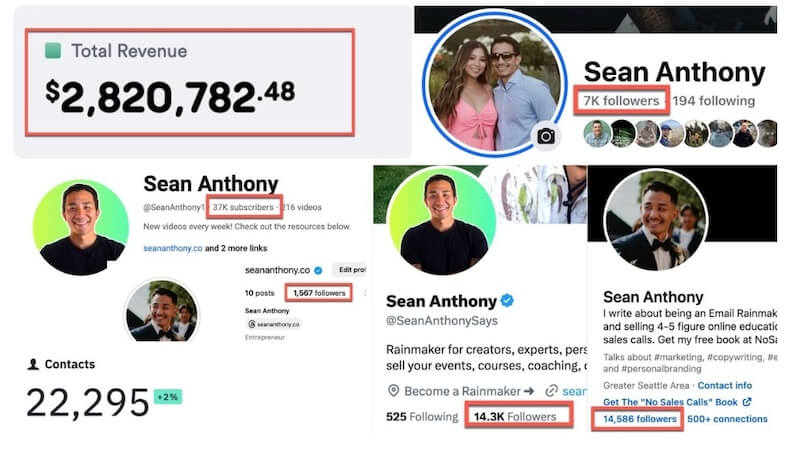
Authority Marketing — $7,760 cash collected beforehand for a 90-min live Zoom training
At $97 a pop, they sold 80 tickets. They run live trainings like this every other week.
And these trainings are a feeder to their main offer — a $250/week mastermind.
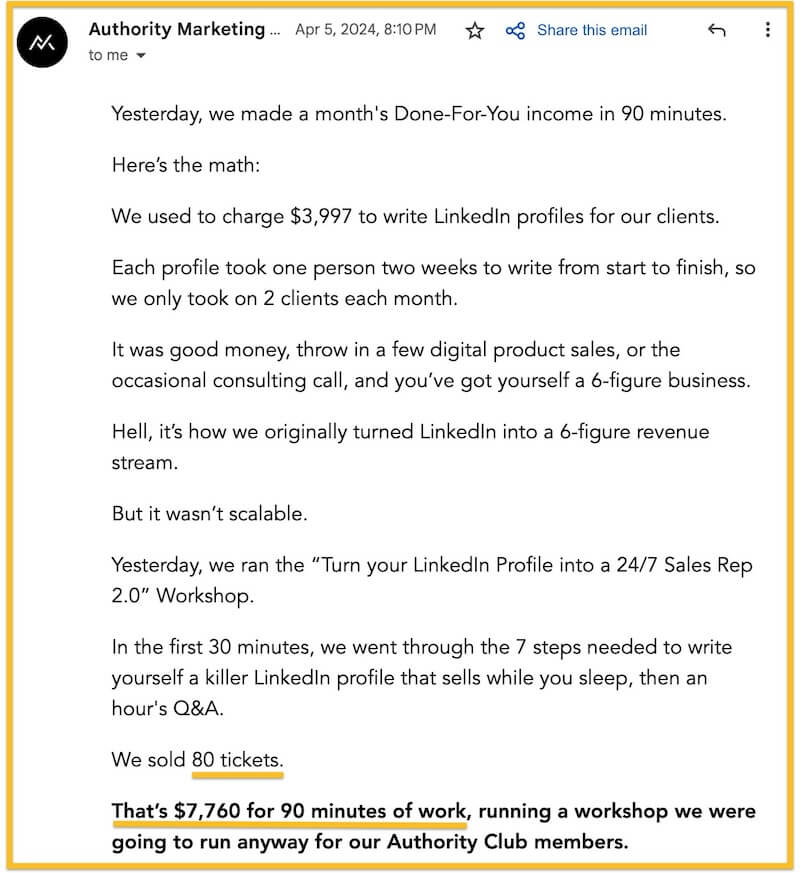
Online Course Decision Matrix
Here’s an Online Course Decision Matrix to help you decide the type of online course content to build based on your preferences:
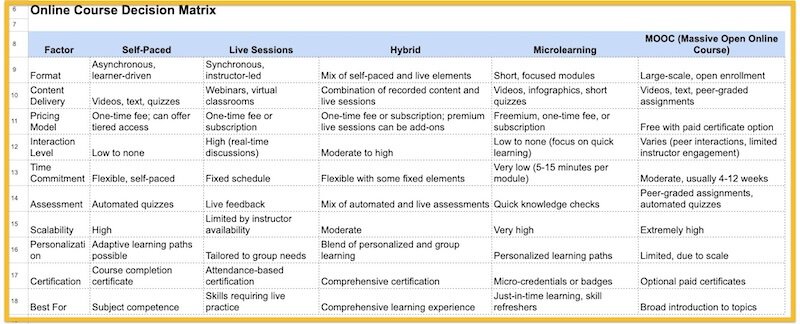
Why sell before you build
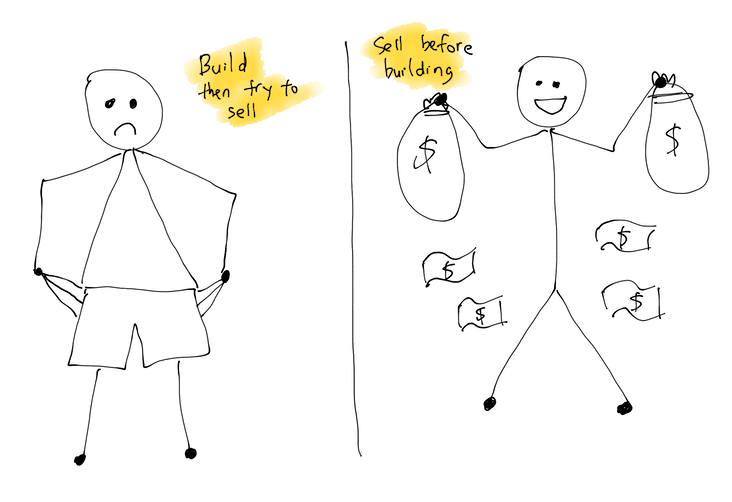
Many online course creators can’t sell their course after spending months (sometimes years) building it.
Some have even become negotiation experts, not because of their courses… but because of the intense bargaining sessions they had with their spouses about the time, energy, and money they’ve poured into their failed courses.
According to Podia, 23% of course creators don’t sell a single course in the first 3 months.
And even though I couldn’t find data for those who can’t sell a single unit of their course ever…
I believe that number is even higher. Because if they can’t sell in the first 3 months, what makes you think they can sell any unit at all?
What is an online course?
An online course is like taking a class on your computer or tablet instead of going to a physical location (school, university, or some lame building where the only thing that’s actually educational is the coffee machine).
An online course is a digital product. As long as you have an internet connection, you can learn from anywhere in the world… for example when you’re taking a dump in the middle of the night or dating someone you don’t like.

Benefits of online education
1/ Learn from anywhere
No need to travel.
No transportation costs.
No more wasted time stuck in traffic.
No need to rent a meeting room.
2/ Learn according to their schedule
Example:
After lazing off in broad daylight, we can learn in the middle of the night.
Last i checked, there aren’t any 2 AM offline classes anywhere. Ever.
3/ Rewatch
We can rewind and rewatch if we miss live sessions or if we want to dive deeper on certain sections of the course.
We can also refer back to specific sections while we’re implementing the strategies and tactics — humans are forgetful and need to constantly refer.
4/ 90% of businesses offer online learning for their employees
Source: Supply Gem
This speaks volumes. But whether they’re actually like taking these courses is up for debate.
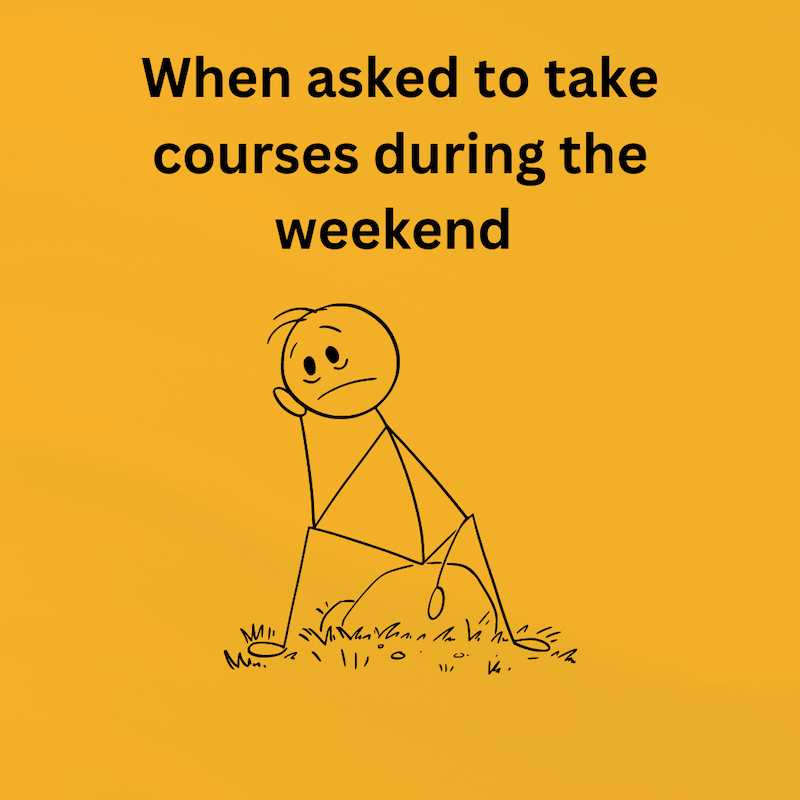
Online course examples from various niches
Relationships
“INSIGHT for Relationships” by Pransky & Associates

Wealth
“Principles of Wealth Management” by Hanken School of Economics
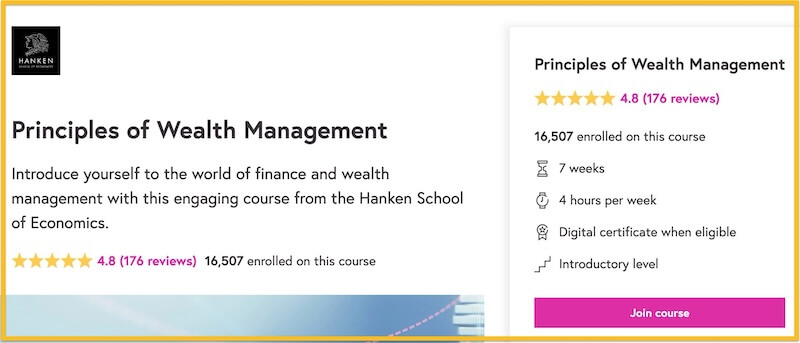
Health
“The Science of Well-Being for Teens” by Yale University
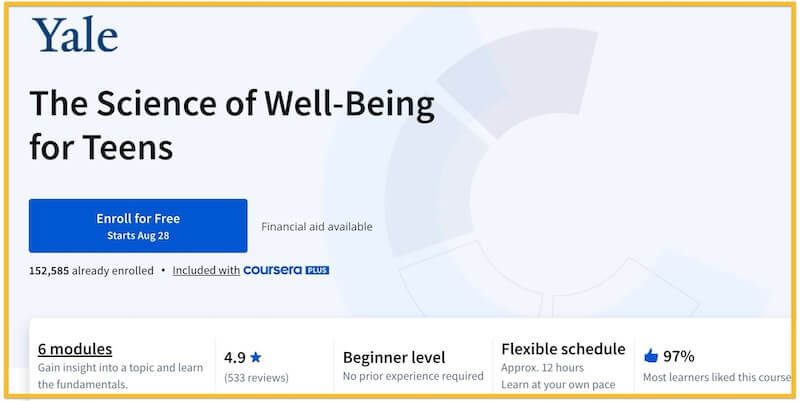
Business
“Business Development & B2B Sales for Startups” by Sales Valley
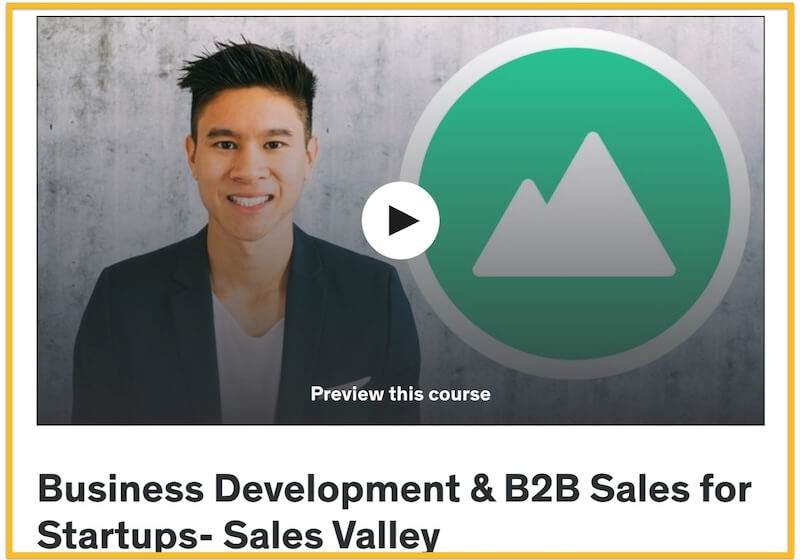
Marketing & sales
“Rapid Email Sales Challenge” course by yours truly
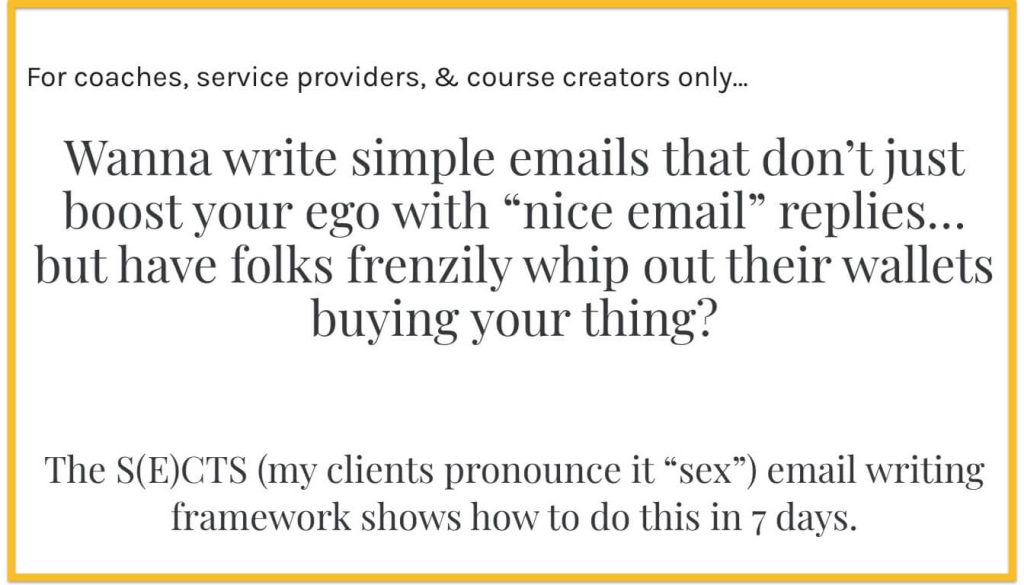
Hobbies
“Watercolor Florals for Beginners” by Jenna Rainey
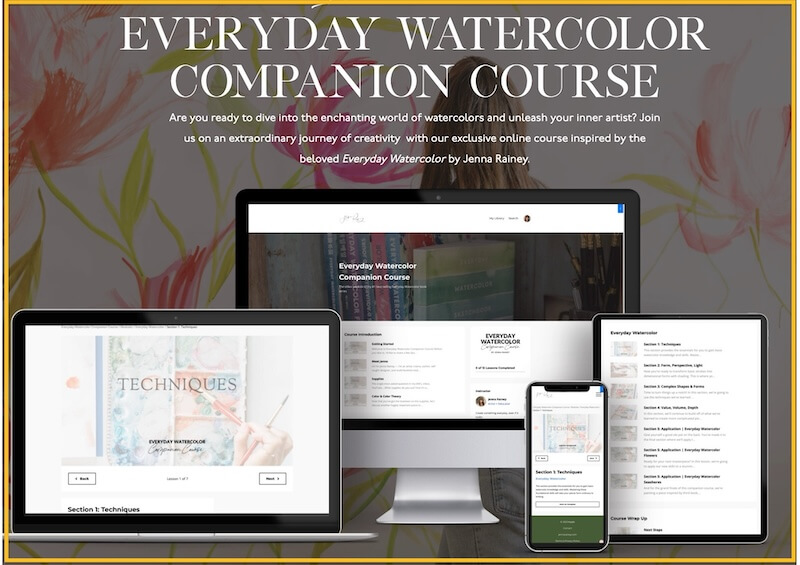
Parenting
“The 7-Step Parenting Success System” by Positive Parenting Solutions
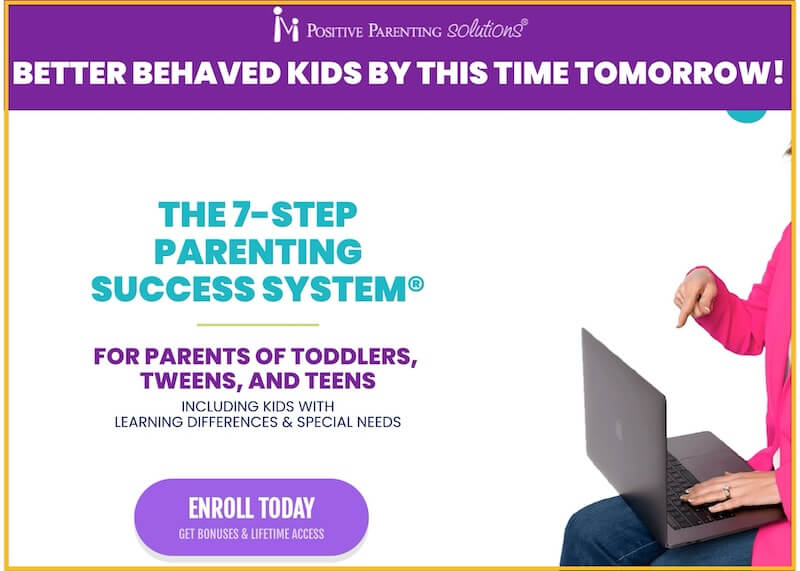
Here are 200 more online course ideas in case you’re interested.
Why pay for online courses when you can get info for free?
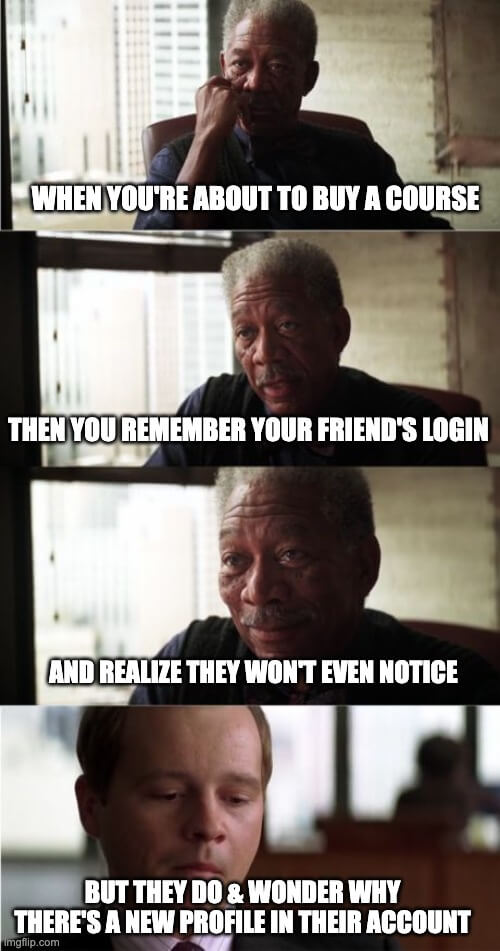
Clear learning path
Paid courses are organized and structured in a logical, step by step fashion.
When folks buy courses:
- They’re buying your expertise
- They’re buying how you’ve laid out the course neatly and logically for them
So that they can easily understand and implement.
Free courses or free information are usually disjointed and lack a clear learning path. Because of their free nature… the creator doesn’t have as much incentive to invest their time and energy into creating them.
Some also withhold crucial information or strategies for paying customers (and we can’t blame them since they’ve to feed themselves and their family — let’s be honest you and I would’ve done the same).
The opposite is true. A good, paid course will cover the necessary topics / steps / strategies / tactics to achieve the learning outcome of the course.
Based on experiences (not just theories)
Typically, the online course instructor is a practitioner, not just another “teacher with textbook theories”.
Theories aren’t always practical. I’d even argue most times they’re too airy-fairy.
A good course creator with real field experience knows how to make the course as practical as it can be…
Because they’ve “been there, done that”. It’s not based on “ohhh… I’ve read about it”, but rather on “I’ve experienced it firsthand”.
Higher motivation and commitment
When we pay for something, we treat it more seriously.
We want to make our money’s worth.
Hence the chance of completing the course and implementing it is higher than if we were to get it for free.
Free = ahhh it’s free anyway, I’ve got nothing to lose.
Support
If the online course includes a mentoring or coaching component, the student / customer can get their questions answered, tailored to their unique situation.
This is especially helpful when they’re implementing the strategies and tactics taught and run into obstacles.
They can consult with the course creator. With a free course, no one is there to help you. Your most likely bet is a friendly ghost tutor, motivational sock puppet, or a GPS for your brain.

Why online courses fail
1/ Don’t understand the target audience
What are their pains, problems, fears, and desires?
Pains aren’t the same as problems.
Here’s what I mean:
Pain is situational:
- I can’t X
- I don’t have X
- I don’t have time for X
“Problem” is the underlying root cause that leads to “pain”.
Here are 2 examples:
Pain vs Problem example #A:
Pain: I have 0 confidence going out on a date
Problem: My face is full of pimples
.
Pain vs Problem example #B:
Pain: No one buys my course
Problem: Nobody sees my sales page
.
For a more in-depth explanation on Pains vs Problems, go here.
2/ Don’t follow the WOTC formula
For sales to happen, these must be present (in order of importance):
- [W]ho / Target audience
- [O]ffer
- [T]raffic
- [C]opy
For example:
Situation A
Who: People with severe back pain
Offer: I’ve got a pill that can fix it in 30 mins
Traffic: Only 1 person is aware of this pill (but he has a killer back pain)
Copy: “Buy now” (lame copy)
→ Boom! Instant sale.
.
Situation B
Who: Folks with severe back pain
Offer: I’ve got a pill that can fix it in 30 mins
Traffic: A million people are aware of this pill (but none has back pain)
Copy: Written by the world’s best copywriter
→ 0 sale
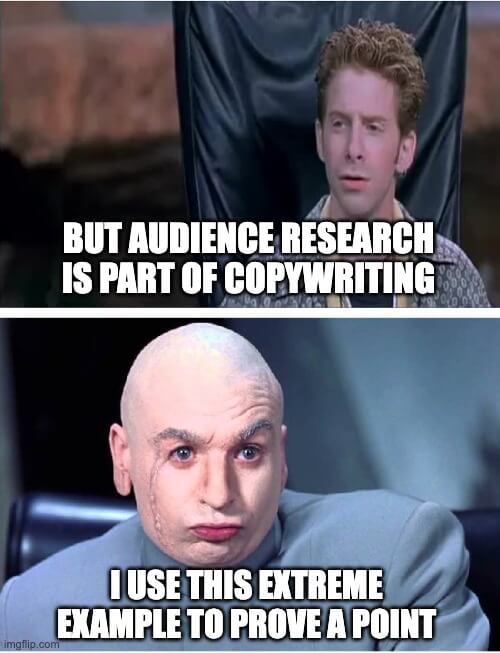
3/ Too much information
A.k.a. information overload.
This leads to overwhelm → give up.
Examples:
- An online programming course that covers 5 programming languages and frameworks in 12 weeks
- A 6-week bootcamp that promises to transform your body, improve your cardiovascular health, increase your flexibility, and teach you self-defense
- An SEO course that covers keyword research, on-page optimization, link building, technical SEO, local SEO, content marketing, market demand, landing page design, copywriting, and building sites with WordPress
4/ Too theory-based (impractical)
It’s boring. Like “back in our school days textbook boring”.
I’m still amazed that there are still many people / organizations who prefer to make their courses or online classes theory-heavy rather than action-heavy.

5/ No accompanying tools to make it easy to implement
I’m talking about templates, cheatsheets, checklist, worksheets, etc.
Tip: these can even be offered as bonuses, making your course even more enticing.
E.g. my Rapid Email Sales Challenge offers these as bonuses:
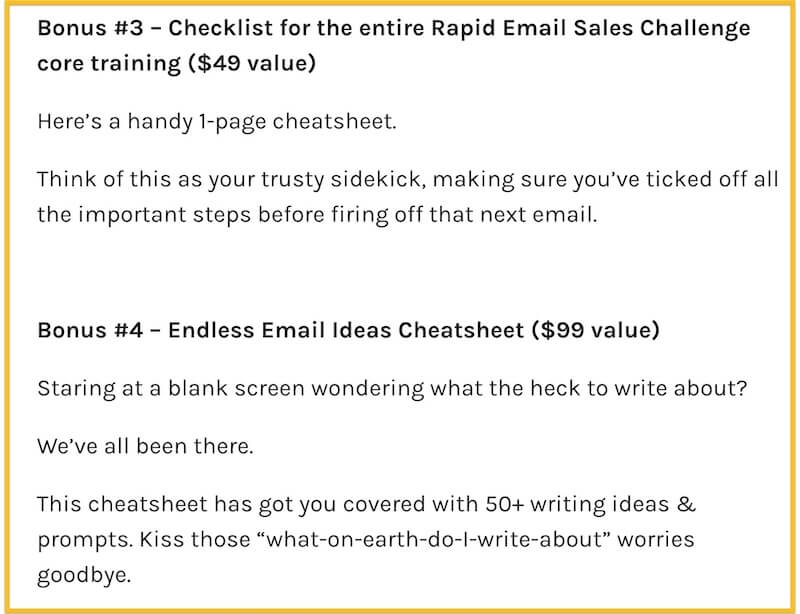
6/ Poor content organization
If the online course structure / content disjointedly jumps from one section to another (i.e. lacks logical progression)…
If the content is overly verbose or roundabout…
If the content doesn’t have a coherent flow…
Then it’s tough for students to understand, let alone implement.
And without implementation, they might as well not take the course in the first place.
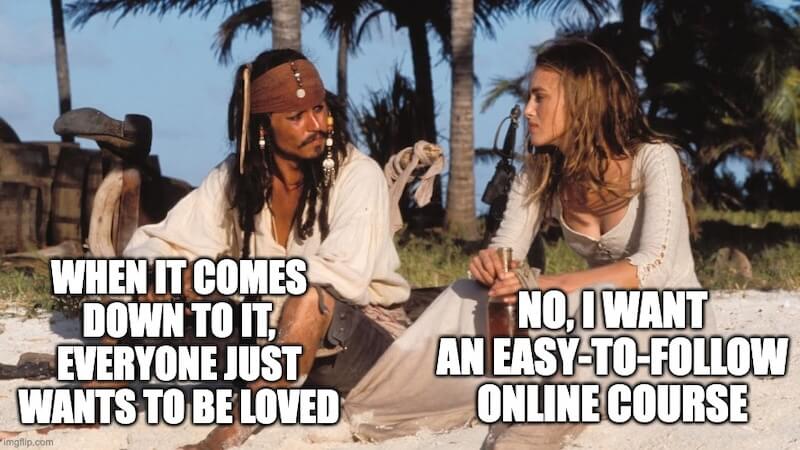
What makes a great online course
1/ 1 course solves 1 specific problem
Do NOT cover everything (A – Z) in a single course because:
A/ Too much information overwhelm people → they don’t take action → no results
B/ You can “break up information” into multiple different offers & sell them separately
E.g. My Rapid Email Sales Challenge (RESC) doesn’t cover affiliate marketing, niche selection, SEO, landing page creation, social media marketing, etc. It only covers 1 thing and 1 thing only — how to write short, personality-based emails that sell.
2/ Help them with a quick win
Share a practical tip so students can get a quick win early into the course. When they implement it for themselves and see some kind of results (albeit tiny), they’ll be more motivated to learn + implement more.
Example:
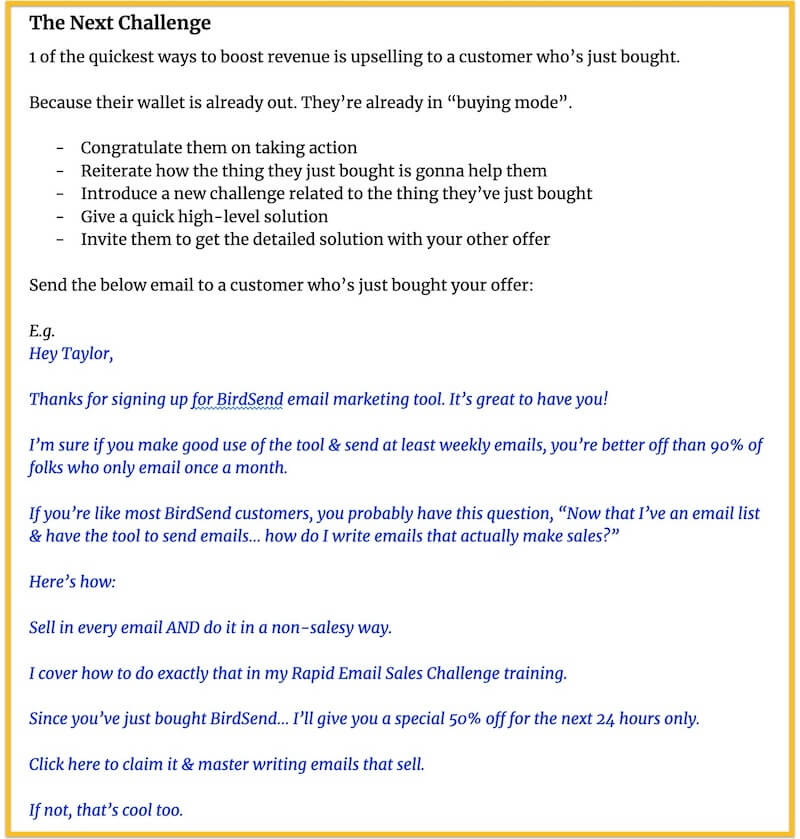
3/ Make sure the course is USEFUL
Content USEFULNESS is more important than production quality.
Usefulness = your content moves students closer to the goal of the course.
E.g. If the goal of the course is so that students can write personality-based emails that sell, then usefulness means they’re able to write personality-based emails that sell after they complete the course.
If you include videos in your course, focus on making them USEFUL instead of worrying about creating high-quality production videos.
This way, you can focus on the meat rather than the fluff… and students will get better results.
Also, for the context of this post, I’m not talking about taking courses for formal college degree requirements or proof of completion. While the concepts and strategies still apply, this post is more for independent course creators who running an info publishing business.
For my Email Profits Machine program, there aren’t even Powerpoint or Google Slides. It’s only delivered via plain-old Google Docs and Zoom.
4/ Enhance the learning experience with examples
The blog posts on this site include examples and screenshots, including this very post you’re reading, so that online learners can better understand your teachings.
5/ Deliver in bite-sized pieces
To make it easily digestible for potential students to “soak in” the new information.
6/ Give a mini-homework for each section / chapter
For example, my RESC online course is delivered vie 7 daily emails, along with a mini-homework based on that day’s lesson. It only takes 10 – 15 minutes to complete each — making it easy, stress-free, and low-risk for students to do.
Here’s another e.g. for one of the courses from Future Learn that includes “practice tests”:

7/ Logically lay out the chapters / modules
So that students can maximize their learning experience.
Beginners can go through your course from beginning to end easily.
More advanced folks can also quickly jump to specific sections / modules that they need help with.
Example: My Email Profits Machine coaching program:
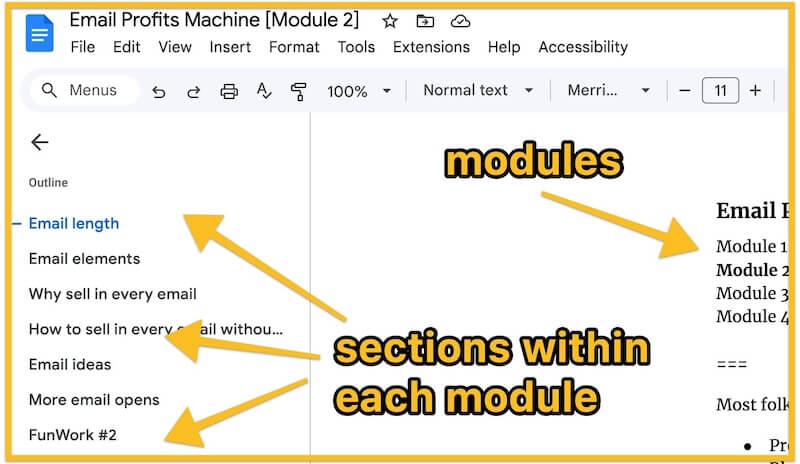
Building the course Deciding the course topic
Remember, don’t create another course without first selling it and collecting sales.
This means we just need to know what the course will be about — i.e. the online course topic / subject matter.
The course topic is the intersection of these 3 — which I call “The Profit Trinity”:
Target audience’s problem x Their buying power x Your Expertise

- Target audience’s problem ≠ their pain point. Remember Pain ≠ Problem I talked about earlier. Make sure to review that.
- Their buying power = they must be able and willing to pay to make their pain go away
- Your expertise = you must be good at what you do. No “faking till you make it”.
Reminder: Your course should only solve 1 problem.
Software to sell your online course
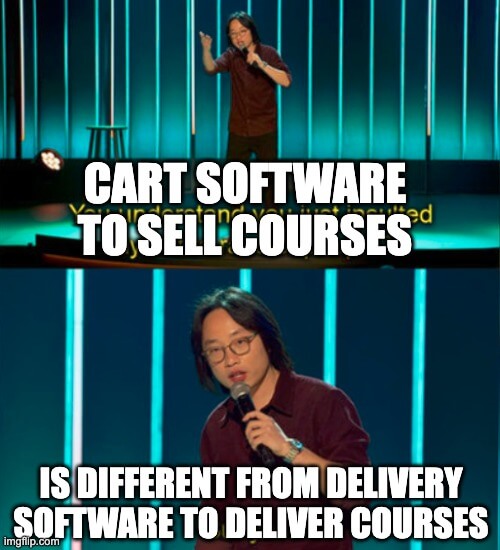
To sell and host your online course, you need these:
- Cart / checkout software to SELL the course
- Delivery software to DELIVER the course for student / customer access
They can be the same tool if the tool has both features.
For example, CartMango lets you sell courses (you get payments directly to your Stripe and / or paypal account). It can also deliver your course files / downloadable resources upon a successful purchase.
CartMango also protects your files from unauthorized access even if your thank you page link is compromised (e.g. the customer shares it on a blackhat forum). CartMango will ask for an OTP (one-time password) before allowing access to lessons / files.
If your course delivery needs are more complex — e.g. you want a full-fledged Learning Management System (LMS) tech set-up — CartMango will eventually support that too, but for now you might want to check out these popular platforms: Kajabi, Teachable, Thinkific, or Podia.
My take?
I like to keep things simple and focus on the main thing: selling a course people want and getting them results.
For solopreneurs and folks running a tiny team (i.e. bootstrapped), I suggest keeping it simple for the delivery part too.
I’d just create a customer list. Then deliver the training / course by sharing these with them:
- Direct links to Zoom recordings of the training or
- Upload them to YouTube, make the videos private, then grab the links to these videos
- For any accompanying resources like docs, templates, frameworks… use Google Docs, Google Sheets, or Notion
Simplicity → breeds action → lead to results.
We can always improve this “delivery” part later when your course has been proven to sell at a higher volume.
Marketing & sales
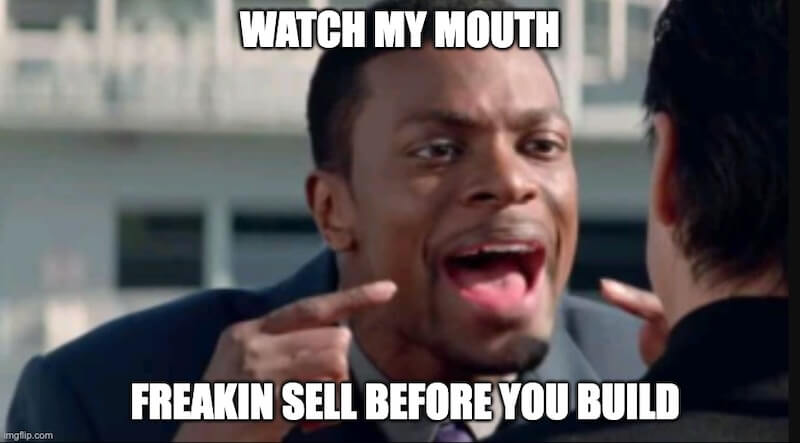
Yes I’ve talked about this many times already throughout this article.
But this is SO CRUCIAL that it’s worth repeating:
SELL BEFORE YOU BUILD.
Folks can say they want our paid shyt… but until they actually pay for it, it’s just talk.
I can’t count the number of times people say to me: “OMG this feature is so vital to me! If your software has it, I’ll def buy it!”
And guess what? After baking the feature into the software, they didn’t buy. As the saying goes “Talk is cheap”.
How to sell before you build
Here’s how I did it when selling my 1K Email List program where I show folks how to build their first 1,000 ready-to-buy email subscribers (not just freebie ones):
1/ I wrote a simple sales copy using Google Doc
2/ I built good relationships with my email subscribers
I did this to foster the all-important KLT (know, like, trust) factor. The more they know, like, and trust me, the more likely they buy from me.
I foster KLT via emails using my S(E)CTS formula.
3/ At the end of the emails, I asked recipients to reply if they’re interested in hearing more about how I can help them build their first 1,000 wallet-ready email subscribers.
Important:
Pay attention. I didn’t ask them if they’d like to join my program because nobody wants to join another program. But they want to solve their problems (in this case the lack of a buyer-ready email list). So I lead with that: “build their first 1,000 wallet-ready email subscribers”.
4/ For those who replied “yes”, I asked a few qualifying questions to make sure they’re the right fit for the program:
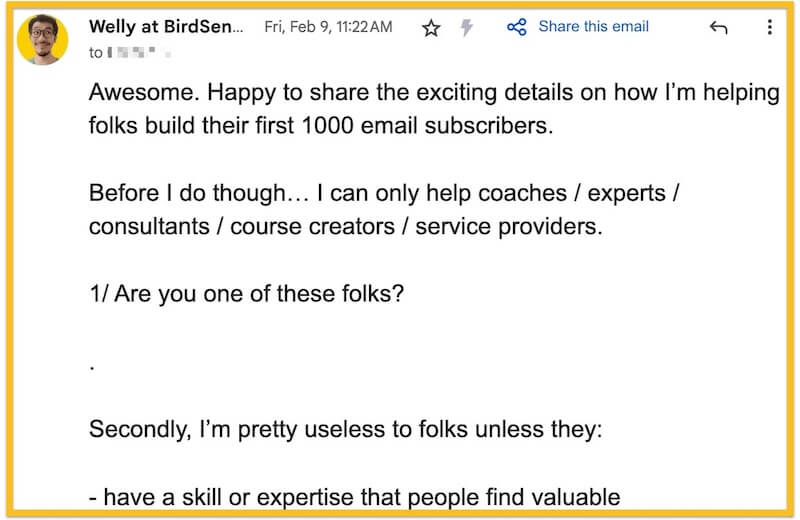
5/ Only after they pass the “quick interview” do I give them the link to the Google Doc sales page
6/ If they like what they see, they buy
At this point, I still haven’t created / built anything for my course apart from the sales page.
7/ Only after I get students / customers did I start creating the course.
Notes:
- I told students / customers the course won’t be ready until [X date]. Meaning if nobody bought before this date, I don’t have to waste time creating the course.
- If my target is at least 10 potential students and I don’t hit that number before [X date], I can simply refund all 10 students.
For a more comprehensive guide on how to sell online courses, go here.
Improving your online course
Gathering feedback
Gather feedback from students / clients / customers by scattering links throughout your course or via drip emails.
We should only ask them a few simple questions. No need for a full-blown survey. Otherwise they won’t do it. Who’s got 15 minutes to spare for a survey lol.
Use the “I like, I wish, What if” method developed by Stanford University’s Design School:
I like
Let them tell you what they like about your course (positive thing).
E.g. I like your enthusiasm and energy throughout the training. It was engaging and fun to watch.
I wish
Let them tell you what can be improved about your course WITHIN THE CURRENT FRAMEWORK (constructive feedback).
E.g. I wish you had slowed down your pace a bit in some parts. It would have made your points easier to follow.
What if
Let them tell you what can be improved about your course by EXPLORING NEW POSSIBILITIES OR DIRECTIONS.
E.g. What if you tried using more visual aids (like slides or props) to support your main points That could really enhance your course.
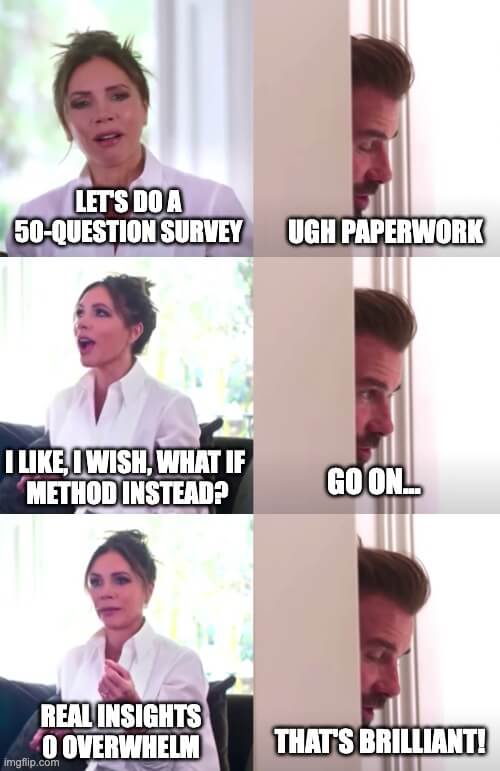
Based on feedback, take what makes sense for you and improve. You don’t have to implement every single feedback. Feedback is like a buffet — so only pile your plate with the good stuff and steer clear of anything labeled “Karen’s Special Recipe”.
Emerging / future trends (VR, AR)
You can make a case for VR (Virtual Reality), AR (Augmented Reality), etc….
There’s a lot of noise about these. Feel free to Google them for your own pleasure.
Here’s my take:
In the context of this article and our business:
- We’re solopreneurs or run our business with a small team — we’re bootstrapped
- And we want to create an online course
Like I said earlier, it’s all about simplicity because simplicity breeds action. And action breeds results.
We don’t want to overcomplicate things by using VR or AR or [insert flavor of the month / year] to deliver our lessons.
We don’t have 10s or 100s of millions to spare.
Human behavior hasn’t changed all that much anyway. Just use plain ol’ text, audio, video content — you can’t go wrong with them.
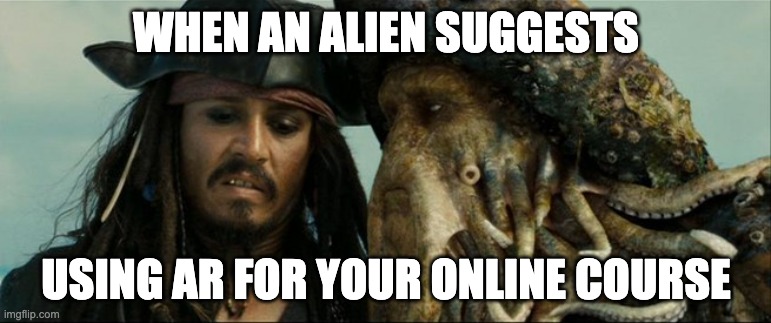
Recap
Regardless the type of online course you want to build (based on the Online Course Decision Matrix above)…
I suggest starting with a live training session for your first course.
You can always venture to create other types when you’ve at least some experience under your belt.
E.g.
- You prefer DIY — after the live training course, sell the recording as a DIY.
- You prefer 1:1 coaching — after the live training course, upsell to 1:1 coaching.
- You prefer group mentoring — after the live training course, upsell to your mastermind community.
Sources / Links
Click to see
- Sean Anthony
- Authority Marketing (Dina Town & Stevan Koncar)
- Imgflip for the memes
- Supply Gem
- “INSIGHT for Relationships” course by Pransky & Associates
- “Principles of Wealth Management” course by Hanken School of Economics
- “The Science of Well-Being for Teens” course by Yale University
- “Business Development & B2B Sales for Startups” course by Sales Valley
- “Watercolor Florals for Beginners” course by Jenna Rainey
- “The 7-Step Parenting Success System” course by Positive Parenting Solutions
- Podia
- Kajabi
- Thinkific
- Teachable
- Future Learn course example
- Google Docs
- Google Sheets
- Notion
